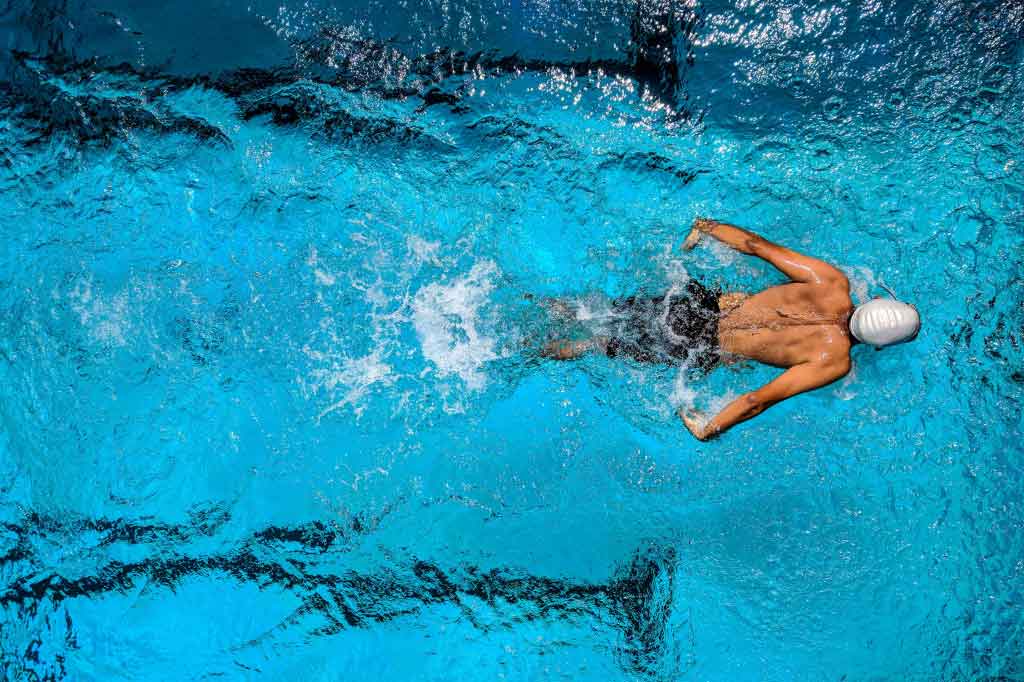Can warm-water exercise help high blood pressure?
Older people

"Working out in warm water could be a radical new cure for high blood pressure," the Mail Online reports. Results of a small study suggest that "hot aquarobics" may benefit people who had failed to respond to conventional treatment for high blood…
"Working out in warm water could be a radical new cure for high blood pressure," the Mail Online reports. Results of a small study suggest that "hot aquarobics" may benefit people who had failed to respond to conventional treatment for high blood pressure.
The study was a small randomised trial that included 32 people with high blood pressure that had not responded to at least three previous blood pressure medications. Those involved did not exercise regularly.
They were randomly selected to do either 12 weeks of three hours of exercise a week in a swimming pool filled with warm water, or to carry on as normal.
The blood pressure of people doing the warm-water exercises did fall to levels that are usually considered healthy. If this effect could be sustained on a long-term basis, this would reduce the risk of cardiovascular diseases such as heart attacks or stroke.
At the moment we don't know which aspect of the exercise programme had the effect, as the programme was compared with doing no regular exercise at all.
We do not know if it was the water, the exercise, the temperature, a combination of all three or another feature of the exercise programme that caused the effect.
There is also the possibility that a placebo effect may have influenced the results.
Further long-term studies in a larger group of people comparing water-based and land-based exercise programmes and pool water at different temperatures are now required.
Read about other lifestyle changes you can make to lower your blood pressure.
Where did the story come from?
The study was carried out by researchers from the University of São Paulo, Brazil. It was funded by Fundação de Amparo à Pesquisa do Estado de São Paulo and Conselho Nacional de Desenvolvimento Científico e Tecnologico (Foundation for Research Support of the State of São Paulo and the National Council for Scientific and Technological Development).
It was published in the peer-reviewed International Journal of Cardiology.
The majority of the Mail Online's reporting was accurate, but it should be noted that the importance of the different elements of the exercise programme can't be determined by this study.
We don't know if it was the exercise, the fact it took place it water, the temperature of the water, or another feature of the exercise programme was key. We also don't know how warm water exercise might be having an effect.
The Mail Online's explanation that, "the temperature of the water dilates blood vessels, improving flow of blood" is plausible but as yet unproven. The reporting does conclude with a useful and appropriate quote from a cardiac nurse, reminding readers that, "getting a minimum of 150 minutes of moderate intensity physical activity throughout the week will help keep your heart healthy".
What kind of research was this?
This was a randomised controlled trial (RCT) that examined the effects of heated water-based exercise on blood pressure in people with high blood pressure that had not responded to at least three previous blood pressure medications (resistant hypertension).
The study states that around an estimated 10-30% of people with high blood pressure have resistant hypertension and these people are at risk of cardiovascular disease.
Randomised controlled trials are the ideal way to answer this question. However, this was a short-term study with only 32 participants. As the researchers themselves note, further long-term studies involving a larger group of people comparing water-based and land-based exercise programmes and pool water at different temperatures are required in the future.
What did the research involve?
The trial involved 32 people between the ages of 40 and 65 years old who had high blood pressure that had not responded to at least three previous blood pressure medications (resistant hypertension). None of the participants had coronary heart disease and none of these people performed regular physical activity.
They were randomly divided into two groups of 16 people. One group performed hour-long exercise sessions in a swimming pool heated to 32ºC three times a week for 12 weeks.
The exercise sessions consisted of walking and callisthenic exercises (callisthenics includes exercises such as star jumps). The other group maintained their normal routine.
Both groups were instructed not to perform any additional leisure time activity and participants continued taking their normal blood pressure medications during the trial.
Before and after the trial, the researchers measured the participants' blood pressure over a 24-hour period during which participants performed normal daily activities.
Participants wore a blood pressure cuff that measured their blood pressure every 15 minutes during the day and every 20 minutes during the night.
Measuring blood pressure in this way avoids the "white coat" effect – the effect that being at the doctor's can have on blood pressure because many people are nervous about visiting a doctor.
The researchers looked at whether there was a change in blood pressure after the trial and whether there was a difference in the change for people who had performed the exercise sessions, compared with people who maintained their normal routine.
What were the basic results?
After 12 weeks, blood pressure fell significantly in people who performed the warm-water exercise sessions. Average systolic (the upper blood pressure figure, which relates to the pressure in the arteries when the heart contracts) and diastolic (the lower blood pressure figure, which relates to the pressure in the arteries when the heart relaxes and fills with blood) blood pressure fell over the 24-hour period, and during daytime and night-time periods:
- average 24-hour systolic: decrease from 137 to 120 mm Hg
- average 24-hour diastolic: decrease from 81 to 72 mm Hg
- average daytime systolic: decrease from 141 to 120 mm Hg
- average daytime diastolic: decrease from 84 to 73 mm Hg
- average night-time systolic: decrease from 129 to 114 mm Hg
- average night-time diastolic: decrease from 74 to 66 mm Hg
In contrast, in the control group, average systolic and diastolic blood pressure significantly increased over the 24-hour period and during the daytime period. Diastolic blood pressure increased during the night-time period in people in the control group.
The researchers also found that the amount of time blood pressure readings exceeded the threshold for defining high blood pressure (blood pressure load) significantly decreased in the exercise group in all time periods. There was no significant change in blood pressure load during any of these periods in the control group.
The researchers also looked at heart and lung function by performing a fitness test on a treadmill. They looked at blood pressure, heart rate, peak oxygen consumption and respiratory exchange rate.
Before the trial, both groups had similar values. After the trial, people who had performed the warm-water exercise had significantly improved peak oxygen consumption and respiratory exchange rate. There was no significant change in these measurements in the control group.
How did the researchers interpret the results?
The researchers conclude that, "Heated water-based exercise training leads to a significant reduction on 24-hour, daytime and night-time blood pressures in [patients with resistant hypertension]."
They go on to say that, "Studies comparing exercise training in heated water with that on land will be needed to better understand the mechanisms of the [blood pressure] lowering in resistant hypertension. Research involving a large number of patients, long-term training and pool water at different temperatures would be required in the future."
Conclusion
This small randomised trial has found that 12 weeks of three hours a week of exercise in a swimming pool filled with warm water reduced blood pressure in a specific group of people with high blood pressure that had not responded to at least three previous blood pressure medications.
A limitation of the study was that the people taking regular exercise sessions in warm water were being compared with a control group who were continuing to take no exercise.
It is therefore unclear whether it was the fact that they actually exercised, rather than the type of exercise, was the key factor. It is possible that a similar effect on blood pressure would have occurred if they had been encouraged to go for a regular brisk walk or a cycle ride.
A better comparison perhaps would have been to compare two groups where the only difference was either the exercise (with both groups in warm water, one exercising, one not) or the change in water temperature (with both groups exercising, one in warmer water, one in cooler).
The small size of the trial – only 16 people in each group – is also an important limitation.
As the researchers themselves note, further long-term studies in a larger group of people, comparing water-based and land-based exercise programmes and pool water at different temperatures, would be required in the future.
Exercise and an active lifestyle are already recommended as a way of lowering high blood pressure. Other recommended lifestyle changes you can make include reducing your salt intake, eating a healthy, balanced diet, reducing the amount of alcohol you drink, stopping smoking, losing weight if you are overweight, reducing the amount of caffeinated drinks you drink, and trying relaxation therapies such as yoga.
Read more about lifestyle changes you can make to lower your blood pressure.






 Subscribe
Subscribe Ask the doctor
Ask the doctor Rate this article
Rate this article Find products
Find products








